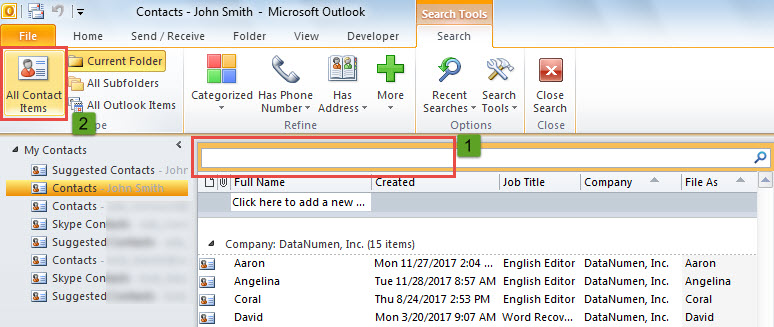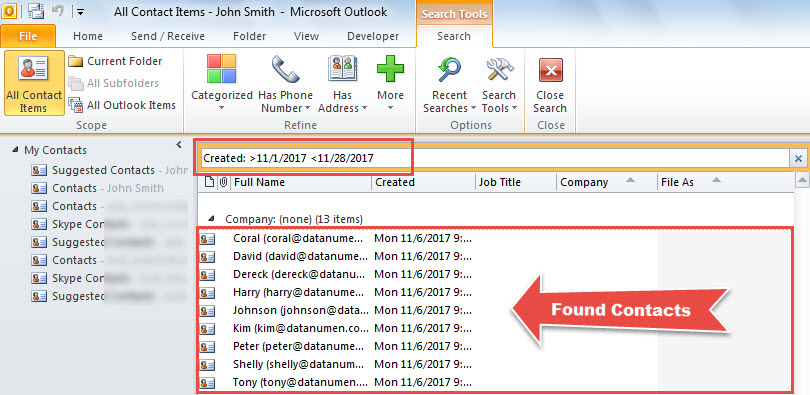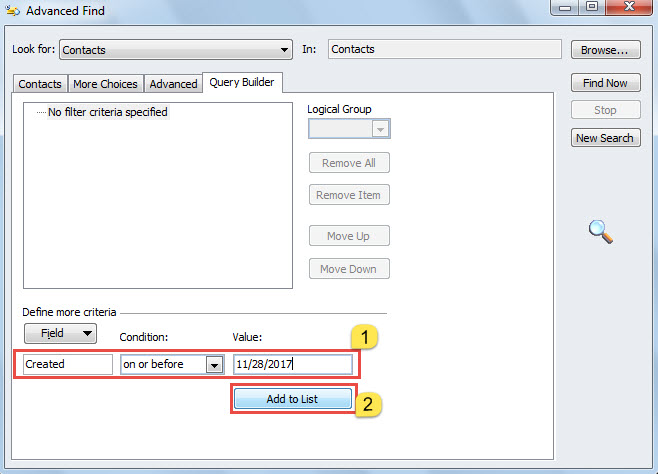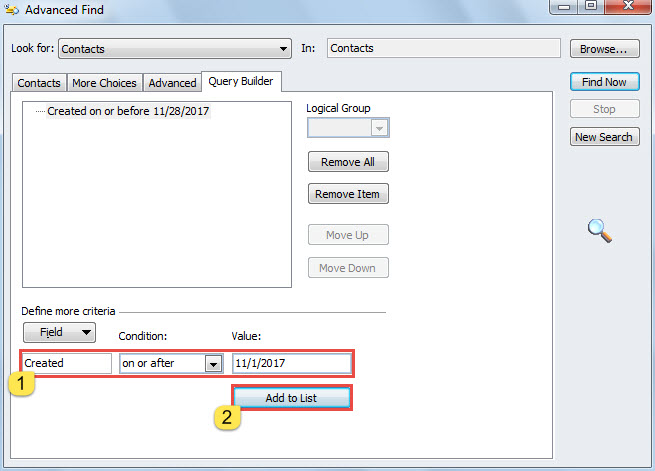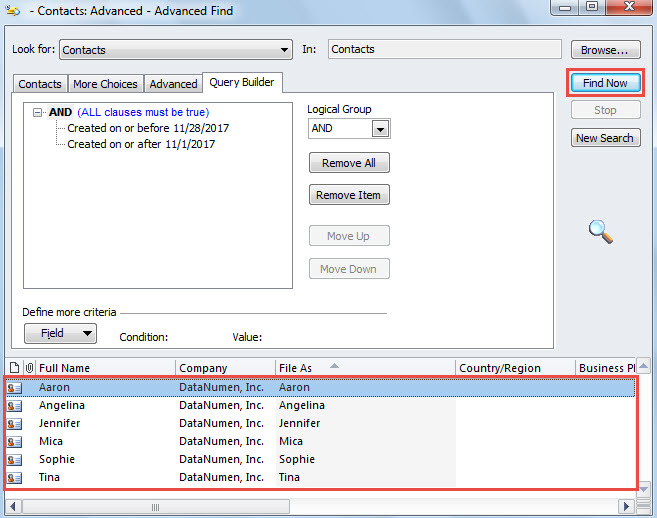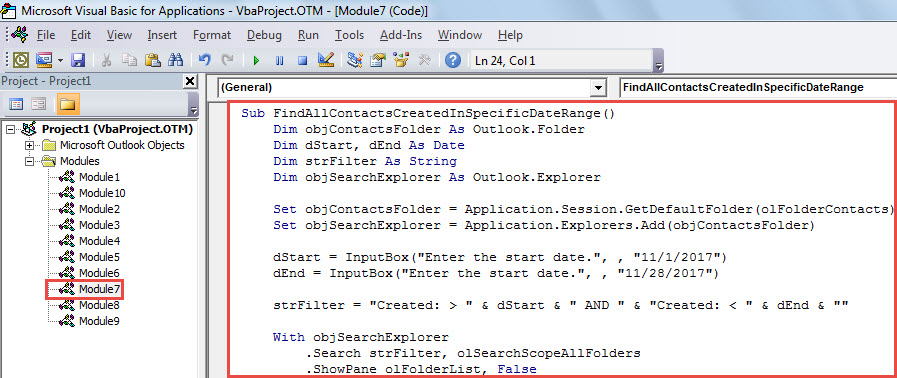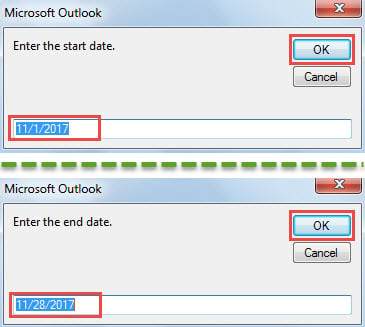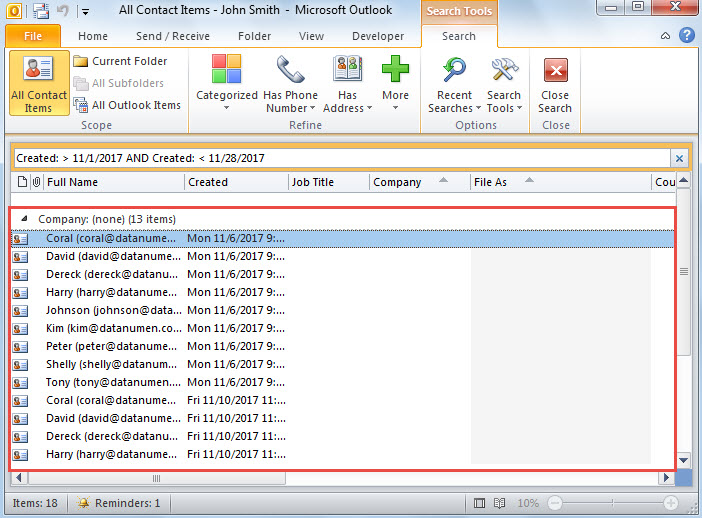If you need to search the contacts by date added, such as finding contacts added in a specific date range, you can make use of the 3 means introduced in this article.
Perhaps you’ve known how to search contacts by full names, companies and even color categories, etc. Yet, at times, you don’t remember such contact information clearly. You can only ensure the date range when the contact added to Outlook. In this situation, you need to search contacts by the date added. Here we’ll show you 3 simple approaches to get it.
Method 1: Find by “Instant Search”
- First off, after opening a Contact folder, click in the search box.
- Then, click the “All Contact Items” button on “Search” tab.
- After that, input the specific date range into the search box, such as “Created: >11/1/2017 <11/28/2017”.
- When the search completes, all the contacts added in this date range will be listed out.
Method 2: Find by “Advanced Find”
- For a start, enable “Query Builder” for Outlook, about which you can refer to the Step 1 in the article – “2 Steps to Create an Outlook Search Folder with “OR” instead of “AND” Criteria for Multiple Conditions“
- Then, on the “Search” tab, click “Search Tools” > “Advanced Find”.
- Next, in the popup dialog box, switch to “Query Builder” tab.
- Subsequently, add a criterion of “Created on or before a specific date”, and hit “Add to List” button.
- After that, add another – “Created on or after a specific date”.
- After adding the two criteria, ensure “And” is selected in the “Logical Group” field.
- Finally, click the “Find Now” button on the right column.
- At once, all the contacts added in this date range will display in the following list.
Method 3: Find via Outlook VBA
- To start with, in Outlook, press “Alt + F11” to access VBA editor.
- Next, copy the VBA code below into an unused module.
Sub FindAllContactsCreatedInSpecificDateRange()
Dim objContactsFolder As Outlook.Folder
Dim dStart, dEnd As Date
Dim strFilter As String
Dim objSearchExplorer As Outlook.Explorer
Set objContactsFolder = Application.Session.GetDefaultFolder(olFolderContacts)
Set objSearchExplorer = Application.Explorers.Add(objContactsFolder)
dStart = InputBox("Enter the start date.", , "11/1/2017")
dEnd = InputBox("Enter the start date.", , "11/28/2017")
strFilter = "Created: > " & dStart & " AND " & "Created: < " & dEnd & ""
With objSearchExplorer
.Search strFilter, olSearchScopeAllFolders
.ShowPane olFolderList, False
.ShowPane olNavigationPane, False
.ShowPane olOutlookBar, False
.ShowPane olToDoBar, False
.Display
End With
End Sub
- At present, press “F5” to trigger this macro.
- You’d be required to input the start and end date of the date range.
- When macro completes, a new Outlook window will show up, which is listing all of the contacts created in the specific date range.
Keep Your Outlook File in Small Size
Outlook data file will become more vulnerable with its size becoming larger and larger. In order to avoid Outlook corruption or data loss, you’d better keep your Outlook file in small size. For instance, you should archive useless emails, delete needless attachments from the PST file. Also, you can utilize a reliable tool to split the file, such as DataNumen Outlook Repair.
Author Introduction:
Shirley Zhang is a data recovery expert in DataNumen, Inc., which is the world leader in data recovery technologies, including repair mdf and outlook repair software products. For more information visit www.datanumen.com
